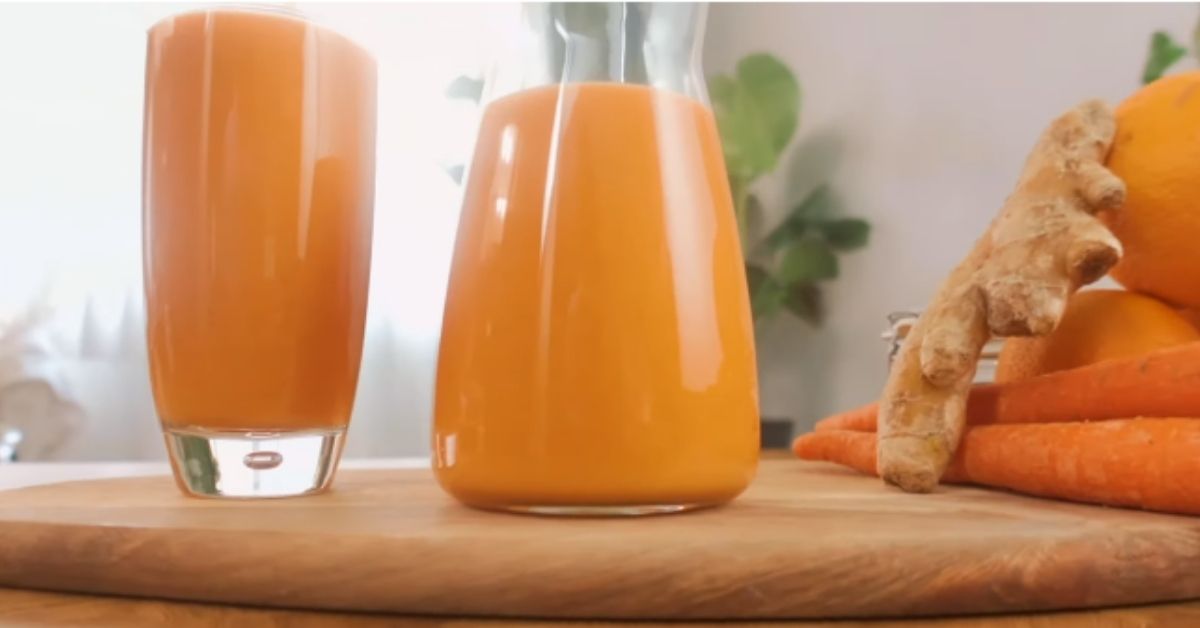Imagine sipping your way to better eyesight with flavors that dazzle your palate! Juicing for vision isn’t just a trend; it’s a tasty strategy to nourish your eyes and improve your overall health. Rich in vitamins and antioxidants, certain fruits and vegetables can be your allies against vision impairment and age-related eye conditions.
By blending ingredients like carrots, spinach, and berries, you’re crafting delicious juices that pack a powerful punch for eye health. These natural concoctions are loaded with Vitamin A, Vitamin C, lutein, and zeaxanthin, all known for their vision-boosting properties. Whether you’re looking to enhance your daily diet or seeking natural ways to support your eyesight, juicing offers a refreshing and effective solution.
Ingredients for Vision-Boosting Juices
To optimize your eye health through juicing, it’s essential to choose ingredients rich in specific nutrients. Below, you’ll find a categorized list of ingredients that can help improve your vision and overall eye health.
Antioxidant-Rich Fruits
Incorporate these fruits into your juices to benefit from their high antioxidant content, which can help protect your eyes from oxidative stress and reduce the risk of eye diseases.
- Blueberries: 1 cup (fresh or frozen)
- Blackberries: 1 cup (fresh or frozen)
- Strawberries: 1 cup (sliced)
- Oranges: 1 medium (peeled)
- Kiwis: 1 large (peeled)
Greens Packed with Lutein and Zeaxanthin
These leafy greens are loaded with lutein and zeaxanthin, which are essential for good vision and can help shield your eyes from harmful light waves.
- Spinach: 2 cups (fresh)
- Kale: 1 cup (chopped)
- Collard Greens: 1 cup (chopped)
- Romaine Lettuce: 1 cup (chopped)
Seeds and Nuts for Omega-3s
Adding seeds and nuts to your juice or as a side snack provides Omega-3 fatty acids that are critical for retina health and may help reduce the risk of vision disorders.
- Flaxseeds: 1 tablespoon (ground)
- Chia Seeds: 1 tablespoon
- Walnuts: 1/4 cup (halved)
- Almonds: 1/4 cup (sliced)
Equipment Needed
To prepare your vision-boosting juices efficiently, you will need certain specific equipment. Here is a careful selection of essentials to ensure you extract maximum nutrients and benefits from your ingredients.
Types of Juicers
Selecting the right juicer is key to obtaining the best results from your nutrient-rich fruits and vegetables. There are primarily two types of juicers that are ideal for juicing for vision:
- Masticating Juicers: These juicers operate at a slower speed, which helps prevent heat build-up and oxidation, preserving the vital enzymes and nutrients in your ingredients. They are perfect for juicing leafy greens and softer fruits, which are staples in vision-enhancing recipes.
- Centrifugal Juicers: These are faster and more suitable for those who are looking for convenience and speed. They work well with harder vegetables like carrots and apples, which are rich in Vitamin A and beneficial for eye health. However, they may not be as effective in extracting juices from leafy greens.
Additional Useful Tools
To enhance your juicing experience and ensure you get the most out of your fruits and vegetables, consider incorporating the following tools:
- Juice Pitcher: A large capacity pitcher will help you store and mix different juices if you like to batch juice or make enough for a few days.
- Fine Mesh Strainer: For those who prefer a smoother juice, a fine mesh strainer can be invaluable. It helps remove excess fiber, making the juice easier to drink and digest.
- Vegetable Peeler and Knife Set: A good quality peeler and knife set can significantly expedite the prep time before juicing. Sharp knives and efficient peelers improve the ease with which you can handle and process ingredients like apples, carrots, and cucumbers.
- Cutting Board: Invest in a durable cutting board for chopping your fruits and vegetables safely and efficiently. Opting for non-porous materials can prevent juice contamination and simplify cleaning.
By equipping yourself with the right tools, you can ensure that making your vision-boosting juices is as efficient and effective as possible, allowing you to enjoy the full spectrum of flavors and nutrients needed for maintaining eye health.
Juicing Instructions
To maximize the vision-supporting benefits of juicing, the correct preparation and juicing process are key. Ensure you gather all necessary tools and ingredients for an efficient and health-promoting juicing experience.
Preparing Ingredients
- Wash Your Produce: Begin by thoroughly rinsing your fruits and vegetables under running water to remove any dirt, pesticides, or residues. For tougher-skinned produce like apples and carrots, use a vegetable brush.
- Peel and Cut: Peel any fruits or vegetables that have thick or inedible skins, such as oranges and kiwis. Cut your produce into manageable pieces. Smaller pieces are easier on your juicer and ensure a smoother juicing process.
- Measure Ingredients: To maintain a balance of flavors and nutrients, measure your ingredients according to the recipe. Typically, a balanced juice for eye health should incorporate both fruits and vegetables in equal parts.
- Prepare Leafy Greens: If using leafy greens like spinach or kale, make sure to chop them coarsely. This helps in extracting maximum nutrients during the juicing process.
- Assemble Your Juicer: Set up your juicer choice—either a masticating or centrifugal model—ensuring all parts are clean and securely attached.
- Juice Greens First: Start with leafy greens since they yield less juice and could get overshadowed by the juice from denser fruits and veggies. This prevents any nutrient loss from delicate greens.
- Add Fruits and Vegetables: Gradually add your prepared fruits and vegetables to the juicer. Alternate between softer items and harder items to maximize the juice extraction.
- Stir and Strain: Once juicing is complete, stir the juice to combine the flavors and pass it through a fine mesh strainer to remove any pulp or extra fibers, enhancing the texture and ease of digestion.
- Serve Immediately: Consume the juice immediately to benefit from the maximum nutrient content, or store in a glass container in the refrigerator for up to 24 hours.
These steps will help you create a nutritious, vision-enhancing juice that harnesses the power of the nutrients you’ve learned about.
Special Tips for Best Results
To truly harness the power of juicing for your vision, follow these expert tips designed to maximize the nutrient uptake and effectiveness of your vision-boosting juices.
Choosing Organic Produce
Opt for organic produce whenever possible to reduce your exposure to pesticides and chemicals, which can detract from the health benefits of your juice. Organic fruits and vegetables tend to have higher nutrient levels, which are crucial for supporting optimal eye health. Start with organic carrots rich in Vitamin A, kale, and spinach loaded with lutein and zeaxanthin, and don’t forget berries for a boost of Vitamin C.
Combining Ingredients for Optimal Benefits
To get the most out of your vision-enhancing juice, combine ingredients wisely. Mixing leafy greens like spinach or kale with a citrus fruit, such as orange or grapefruit, can enhance your body’s absorption of the antioxidants crucial for eye health due to the Vitamin C content. Including a small piece of beetroot can increase blood flow to the eyes, enhancing overall eye function. Remember to add a source of Omega-3, such as flax seeds, to your juice to aid with cellular health of the eyes.
Make-Ahead and Storage
Preparing your vision-boosting juices in advance can be a great time-saver. Let’s ensure you do it correctly to maintain the nutritional integrity of your juices.
How to Store Fresh Juice
To preserve the quality and nutritional value of your fresh juice, store it in an air-tight container. Glass jars with secure lids are ideal as they don’t impart any unwanted flavors and help prevent oxidation. Fill the container to the brim to minimize air exposure, as oxygen can degrade the nutrients quickly. Store your juice in the refrigerator immediately after preparation and aim to consume it within 24 hours for optimal benefits. If you must store it longer, adding a small amount of lemon juice can help preserve its freshness and prevent rapid oxidation.
Prepping Ingredients in Advance
Maximize your efficiency by prepping your juicing ingredients ahead of time. Wash all your fruits and vegetables thoroughly to remove any pesticides or impurities. Peel and cut them according to the needs of your juicer. For greens like spinach or kale, washing and then pat drying before storing them in the fridge can keep them fresh longer. Store pre-cut fruits and vegetables in air-tight containers or sealed bags in the refrigerator. This not only saves time when you’re ready to juice but also preserves the freshness and nutritional value of the ingredients. If you plan to use ingredients like flax seeds, grinding them right before juicing will retain their omega-3 fatty acids better than pre-ground seeds.
Conclusion
Embracing juicing as part of your daily routine can significantly enhance your vision health. By incorporating the right mix of fruits and vegetables rich in vision-supporting nutrients you’re not just investing in your eye health but also boosting your overall well-being. Remember to follow the best practices for juicing and storage to ensure you’re getting the most out of your nutritious drinks. Start your journey towards better vision today with a refreshing glass of homemade juice!
Related Posts:
- Unlocking the Amazing Health Benefits of Juicing Pears: Tips & Recipes
- Top 10 Benefits of Juicing: Boost Health with Every Sip
- Beginner’s Guide: How to Incorporate Juicing Into Your Diet for Health
- Explore the Advantages of Cold Pressed Juice: Health and Eco-Benefits
- Juicing for IBS Relief: Best Practices and Effective Juices
- Ultimate Guide to Juicing for Inflammation: Tips, Ingredients & Techniques
- Top Immune System Boost Juice Recipes for Vibrant Health
- Boost Your Eye Health: Ultimate Guide to Juicing for Vision
- Top Juicing Recipes for Heart Health: Boost Your Cardio with Nature’s Best
- Does Orange Juice Cleanse Your System? Debunking Detox Myths


